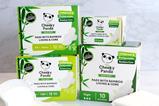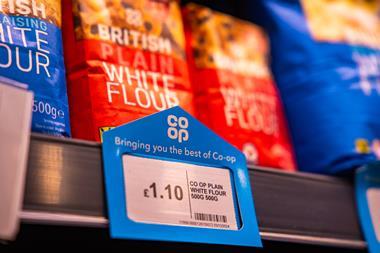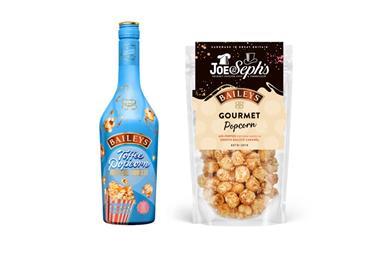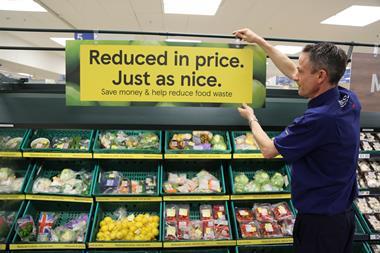Brightly coloured wrappers, fun flavours, free toys (we’re looking at you, Kinder Surprise): these are just some of the well-worn techniques used by confectionery brands to boost their appeal to children.
Sales of sweets have long been buoyed by pester power, which is why the findings in Bite Back’s latest report are less than surprising.
The youth-led campaign group analysed 262 products from 10 of fmcg’s biggest manufacturers. For seven of the manufacturers, the majority of their child-appealing products were HFSS.
Mondelez, owner of category-leading chocolate brand Cadbury, was named “one of the worst offenders”. All 58 of the products reviewed that were deemed to appeal to children were HFSS.
Ferrero (which owns Kinder and Nutella) was also slammed by Bite Back. All 22 of its child-appealing products analysed by the campaign group were HFSS.
While Ferrero did not respond to The Grocer’s requests for comment, Mondelez was quick to defend itself and criticise Bite Back’s research. “We disagree with the report’s characterisation of our products,” says a spokeswoman.
“Our products are marketed at adults and parents and intended as an occasional treat, to be enjoyed as part of a healthy and balanced diet.”
How did sweet makers respond to Bite Back’s report?
Mondelez’s reaction (and Ferrero’s lack of one) won’t instil health campaigners with much hope for reform. So, what can campaigners do to effect change in the confectionery category?
Setting out some guidelines would be a good place to start. Bite Back’s report criticises 18 techniques used by manufacturers to boost their products’ appeal to children – from featuring unconventional colours, shapes, or flavours on pack to using images of cartoons and licensed characters – but it doesn’t offer any alternative marketing methods.
When The Grocer asked Bite Back to provide guidelines for responsible pack designs, CEO James Toop avoided specifics, stating: “There are many examples of less healthy foods that aren’t plastered with cartoons or have quirky names, shapes and flavours, so don’t immediately appeal to children.”
Without the introduction of a stricter framework, manufacturers will continue to exploit loopholes. As a spokeswoman for Nestlé (which was also criticised in the report) points out, whether packaging uses “bright” colours or “quirky” shapes is “subjective” and unscientific.
Furthermore, banning all 18 child-appealing techniques outlined in Bite Back’s report would have major commercial implications for manufacturers and retailers, alike – meaning the campaign group is unlikely to get either on board voluntarily.
The report cites Kit Kat Cereal and Dairylea Snackers with Cadbury Mini Fingers as examples of products which feature their “unconventional flavour” on pack. But if confectionery brands were banned from entering other categories for fear their launches might appeal to children, what would happen to lucrative licensing deals between suppliers?
What is ‘healthier’ confectionery?
Of course, confectionery brands could always reformulate their products to avoid making changes to their packaging – but this also brings major commercial risks.
Historically, ‘better-for-you’ confectionery has struggled to make an impact in grocery. Take Nestlé’s Milkybar Wowsomes, which was withdrawn in 2020 after less than two years on the market. Or Cadbury Dairy Milk 30% Less Sugar, which launched in 2019 after three years of development, 35 different recipes, and six rounds of consumer testing – its sales scraped in at just £305.5k in 2023 [NIQ 52 w/e 31 December 2023].
Even Cadbury’s latest stab at healthier innovation – its HFSS-compliant Fruitier & Nuttier Trail Mix – has brought in just £2.6m in its first 10 months.
While manufacturers haven’t given up on better-for-you NPD (Mondelez is currently developing ‘75% less sugar and fat’ chocolate bars), they are unlikely to throw their full weight behind it unless it proves to be lucrative.
A more realistic first step might be proposing a ban on the use of cartoon characters on confectionery packaging. It’s a tangible goal the retailers are more likely to support. After all, Lidl, Aldi and Asda all axed mascots from their cereal boxes in 2020 in a bid to curb pester power and tackle childhood obesity.
To effect lasting change, campaign groups like Bite Back should focus on specifics and encourage fmcg’s biggest manufacturers to take baby steps towards improving the nutrition of their child-friendly portfolio. By launching a wholesale attack, they risk alienating them further.
And of course, they should help by suggesting what actions manufacturers can take to improve.

























No comments yet